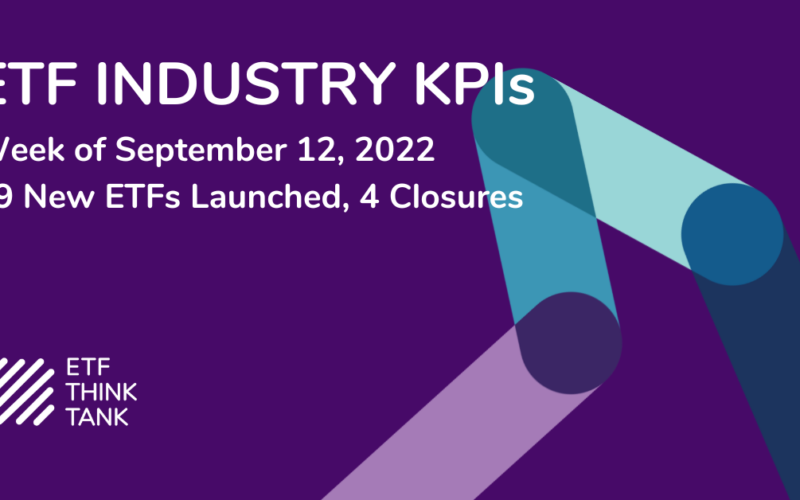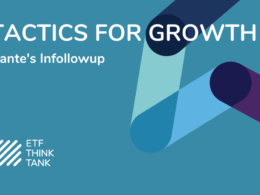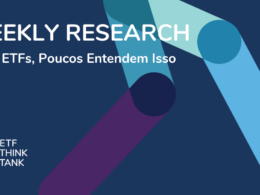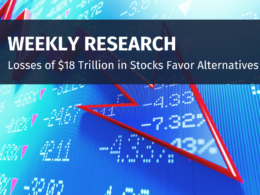At the Future Proof Wealth Festival this week, I was reminded of three important things we all know but sometimes forget:
- Wealth isn’t just about money.
- Being a good financial advisor is a tall order.
- Never travel without sunscreen. (It was an outdoor event by the beach, and I now look like a red lobster.)

Throughout this wealth management-meet-street festival event, one of the words I heard a lot in panels and conversations was “holistic.” Boy, do we love this word!
The Oxford (online) dictionary defines holistic this way: “Characterized by comprehension of the parts of something as intimately interconnected and explicable only by reference to the whole.”
In the context of wealth management, I understand this as wealth being a holistic affair that demands many moving parts – from money to products and services to people to experiences – in order to deliver its total value. The idea goes that you aren’t wholly wealthy in the absence of any of these interconnected parts.
I’d argue that the advisor sits at the intersection of all of this. It’s a professional-expertise demanding role that’s also operational in scope and rests on relationship-building, credibility, and brand strength. The advisor must be good at a lot of things in order to succeed, and the goal posts are constantly moving as new generations of investors redefine what matters to them; as technology enables new solutions; and as markets humble us all.
Advisors, I have to say: respect! Which, by the way, is something many of you don’t seem to get a lot of.
Dr. Daniel Crosby, a well-known psychologist and author of behavioral finance best sellers including “The Laws of Wealth,” spoke at the conference about the human element in the money conversation, and he cited some unflattering survey results that ranked advisors as the second least trusted industry today, behind only social media. Advisors, he told an audience, are ranked somewhere between members of Congress and car salesmen when it comes to trust. Ouch.
Why? Probably because the advisory business has a history of a “sales-first” mentality. The good news is that it now knows that “client-first” is the only way forward.
From Sales- To Client-Focused
To that end, there were a lot of interesting nuggets of wisdom shared at this event, that I’ll drop here for the good, hard-working advisors trying to deliver value to clients every day and hoping to surpass Congress members in street cred:
- Product and service design needs to be inclusive.
There’s no such thing as a “one-size-fits-all” approach when it comes to products and services. We live in the times of equity when it comes to access, solutions, and expectations. “Meet people where they are” if you want to be relevant and resonate, says Annie Jean-Baptiste, author of Building for Everyone.
Part of this effort means understanding not just what your client wants, but who your client is. Risk tolerance questionnaires are cool, but they don’t really tell you what’s really important to your clients, i.e., – what makes them tick.
If you listen to Dr. Crosby, he’s a proponent of a radical idea: embrace emotion in wealth management. I know, I was stunned too. His research and experience show that money is emotional to us – it’s the leading stressor in life, he says. Money itself, how to make money and how to allocate money – spend today or save it for tomorrow – are the leading sources of stress (and marital strife, he pointed out) across folks of all kinds. So, embrace it and bring it into the conversation around wealth management.
“We think we need to eradicate emotion. Wrong. We can roll with emotion and use it strategically for better decisions. We can exploit irrationality,” he says.
- Services expansion and specialization are key to advisor growth.
“The generalist model works at point of sale, but growth requires specialization that can be scaled. Clients are trapped between lowest cost and highest value [advisors.] Highest value is a differentiator, and specialization is a way to deliver that,” says Dave Welling, CEO of Mercer Advisors.
The challenge is that specialization takes time and commitment. Financial needs are increasingly complex, and advisors needs to first decide who they want to serve. Once you’ve picked a lane where you believe you can add the most value, consumer preferences should dictate business development and focus, he says.
One of the ways to achieve this is by getting rid of “middle office work,” he says. Lean into best-in-class technology (Web 3.0) solutions for that operational load.
- Community is not just a buzzword in financial circles. It’s a bona fide strategy.
It can be very powerful when people come together, connected by a similar cause or interest. The meme stock phenomenon – the Gamestop and AMC investors of the world — proved that. If you, as an advisor, can build a community of like-minded or like-interested clients, you may find that growth comes easier.
“Advisors need to stay relevant and attract the next generation of investors. Creating community is a differentiator that allows you to do that,” says Penny Phillips, Co-Founder and President of Journey Strategic Wealth.
Perhaps a good place to start is by talking to clients in a language that they can understand. Forgo “industry speak” for frank conversations about money and goals and priorities in a way that translates to the client you are looking to serve.
Let me point out, ironically, that “holistic” was one of the words cited as an offender – most clients don’t know what that means when it comes to their financial health.
- Build a brand that reflects who you are.
A lot of advisors think of their business demands in three pillars, if you will, ranked this way: professional expertise – operations – public face. The latter, face or brand, can’t come last as it often does, says George Acheampong, Founder and managing partner of Capitalwize.
“Don’t focus on conversion. Lead with brand and name association,” he said to an audience. When people know you and relate to who you are and what you have to say, they will find you as fans and, hopefully, as clients, he says.
By leading with brand – which is through social media, content generation, the sharing of your expertise to a broader audience that may not require your services – you are providing value first in the hopes that the halo effect of that effort will lead to conversion down the road, he says.
What works here is authenticity and consistency – or “reps” as in exercise – rather than one-hit wonders that get a lot of likes on social channels.
We do a lot of work on social media at the ETF Think Tank, so we understand this remains a big lift for many advisors (and product providers), but it can be a powerful lead generation tool that fuels significant business growth.
Delivering Value Where It Matters
Today, being just a good professional who understands financial advice isn’t enough. It’s table stakes, as some put it. Differentiation is key, and it comes from specialization, from brand authenticity, from strong (tech-powered) user experience and solutions, and from building a community. It’s a lot.
But in the end, it’s about delivering value. If the effort begins with “who” we serve, the “what” they need and the “how” to get there should fall in place thanks to your expertise, your knowledge, and an abundance of tools available to you.
Success can mean anything you want to mean for yourself and your business, but a job well done should mean a client who’s wholly wealthy, putting their money to work in line with the things, people, and experiences they value most, all starting with your good financial advice. Deliver that kind of value, and that’s as future proof as you can be.

Disclosure
All investments involve risk, including possible loss of principal.
This material is provided for informational purposes only and should not be considered an individualized recommendation or personalized investment advice. The investment strategies mentioned may not be suitable for everyone. Each investor needs to review an investment strategy for his or her own particular situation before making any investment decision.
All expressions of opinion are subject to change without notice in reaction to shifting market conditions. Data contained herein from third party providers is obtained from what are considered reliable sources. However, its accuracy, completeness or reliability cannot be guaranteed.
Examples provided are for illustrative purposes only and not intended to be reflective of results you can expect to achieve.
The value of investments and the income from them can go down as well as up and investors may not get back the amounts originally invested, and can be affected by changes in interest rates, in exchange rates, general market conditions, political, social and economic developments and other variable factors. Investment involves risks including but not limited to, possible delays in payments and loss of income or capital. Neither Toroso nor any of its affiliates guarantees any rate of return or the return of capital invested. This commentary material is available for informational purposes only and nothing herein constitutes an offer to sell or a solicitation of an offer to buy any security and nothing herein should be construed as such. All investment strategies and investments involve risk of loss, including the possible loss of all amounts invested, and nothing herein should be construed as a guarantee of any specific outcome or profit. While we have gathered the information presented herein from sources that we believe to be reliable, we cannot guarantee the accuracy or completeness of the information presented and the information presented should not be relied upon as such. Any opinions expressed herein are our opinions and are current only as of the date of distribution, and are subject to change without notice. We disclaim any obligation to provide revised opinions in the event of changed circumstances.
The information in this material is confidential and proprietary and may not be used other than by the intended user. Neither Toroso or its affiliates or any of their officers or employees of Toroso accepts any liability whatsoever for any loss arising from any use of this material or its contents. This material may not be reproduced, distributed or published without prior written permission from Toroso. Distribution of this material may be restricted in certain jurisdictions. Any persons coming into possession of this material should seek advice for details of and observe such restrictions (if any).












